20+ Sample Project Closeout Checklist
-
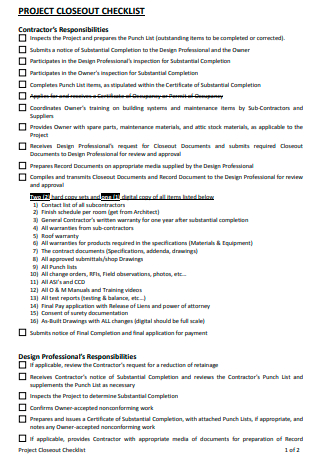
Project Closeout Checklist Template
download now -

Formal Project Closeout Checklist
download now -
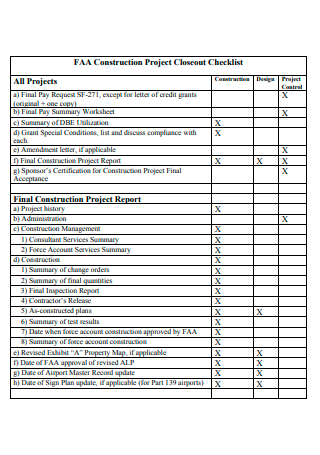
Construction Project Closeout Checklist
download now -
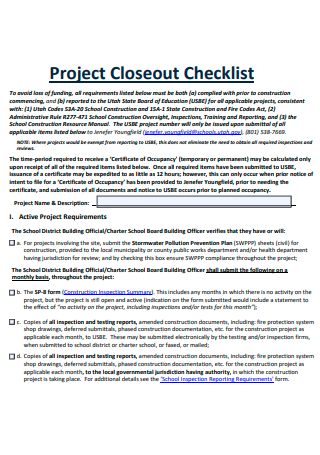
Project Closeout Checklist Example
download now -

Basic Project Closeout Checklist
download now -
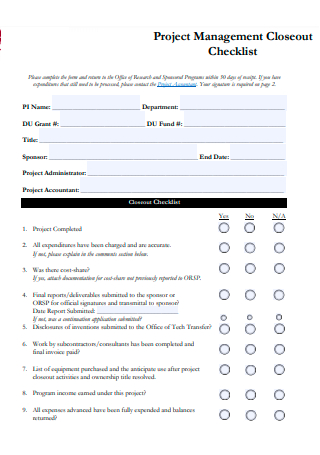
Project Management Closeout Checklist
download now -
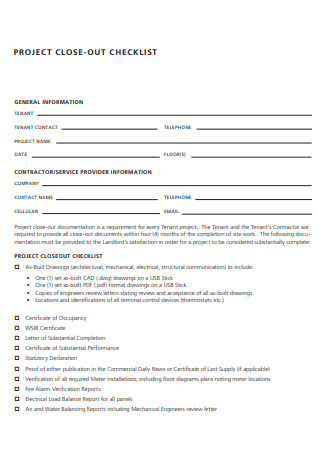
Project Closeout Checklist in PDF
download now -
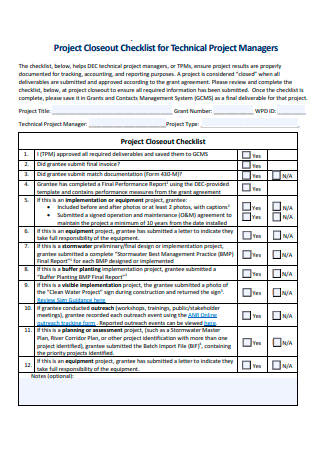
Project Closeout Checklist For Technical Project Managers
download now -
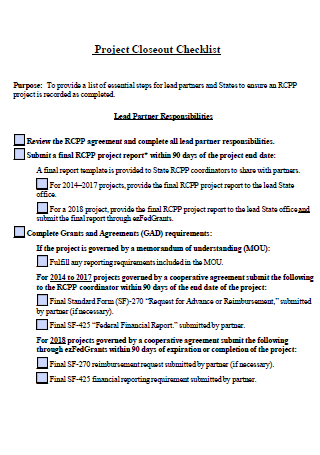
Standard Project Closeout Checklist Template
download now -
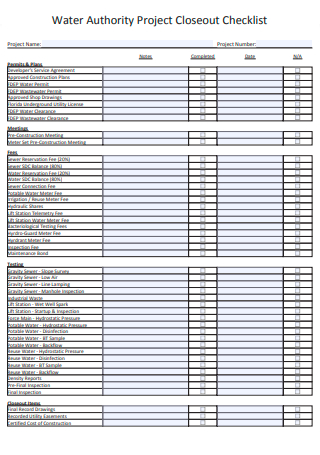
Water Authority Project Closeout Checklist
download now -

Sponsored Project Closeout Checklist
download now -
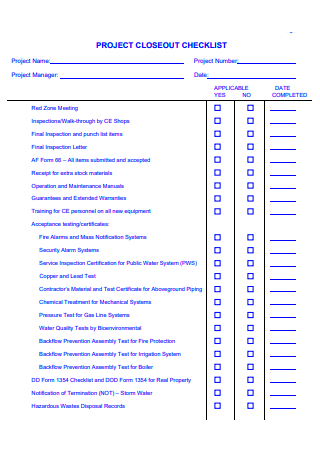
Project Closeout Checklist Format
download now -
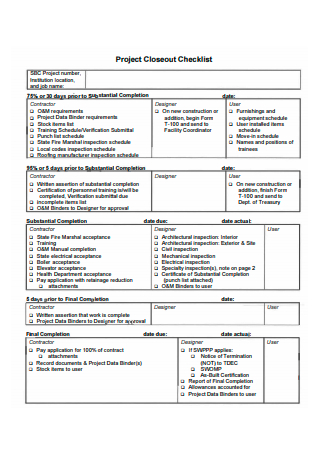
Simple Project Closeout Checklist
download now -
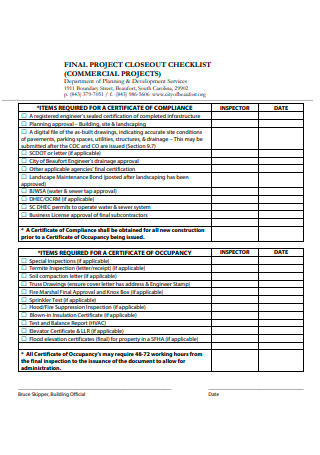
Final Project Closeout Checklist
download now -
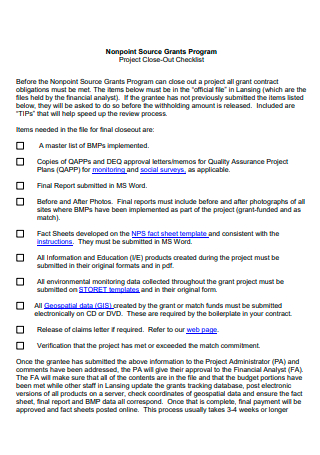
Grant Program Project Closeout Checklist
download now -
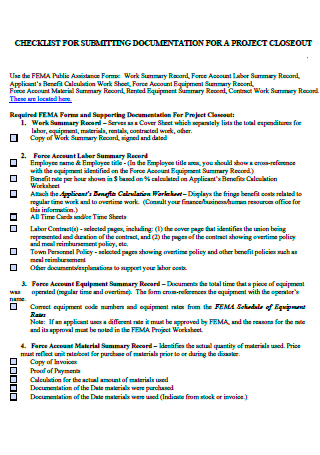
Project Closeout Checklist For Submitting Documentation Template
download now -
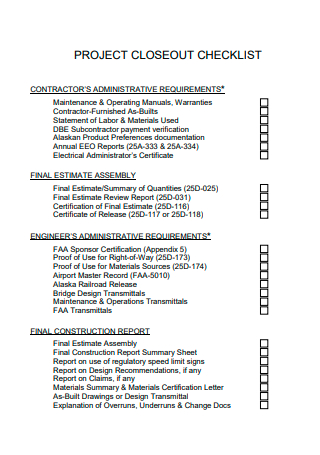
Printable Project Closeout Checklist
download now -
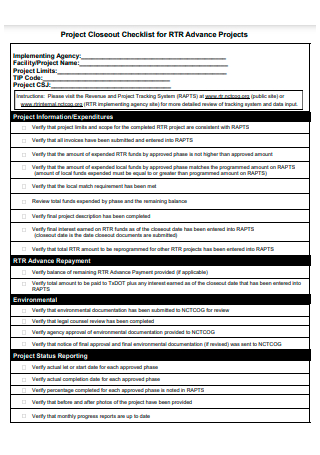
Advance Project Closeout Checklist
download now -
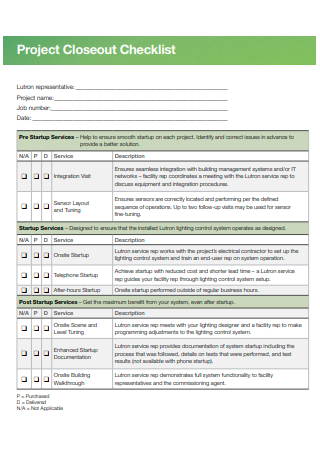
Draft Project Closeout Checklist
download now -
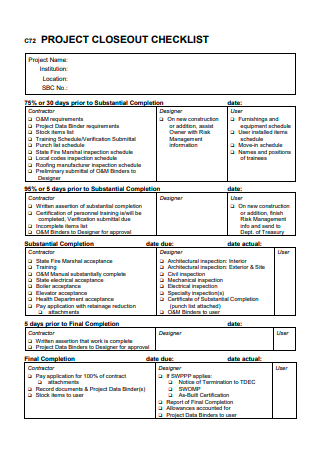
Sample Project Closeout Checklist
download now -
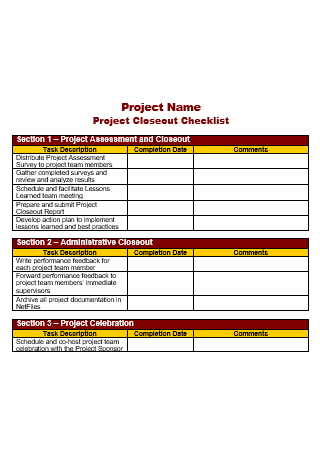
Project Closeout Checklist in DOC
download now
FREE Project Closeout Checklist s to Download
20+ Sample Project Closeout Checklist
What Is a Project Closeout Checklist?
What Are the Advantages of a Project Closeout Checklist?
Important Elements of a Project Closeout Checklist
Issues or Challenges During Project Closeout
How to Close a Project
FAQs
What is a Post-Mortem Meeting?
Can ending your previous project properly make the next one better?
What is a project?
What Is a Project Closeout Checklist?
First of all, what is a Project Closeout? Simply put, project closeout, also known as project closure, is defined as the last part of a project’s life cycle. It involves procedures that finalize and finish a particular project, which can include sorting out paperwork, undergoing the final approvals, the releasing of resources, and much more depending on the difficulty of the project.
A project closeout checklist or a project closure checklist is a business document that serves as a guiding document to make sure that every process during the project closure phase is closely followed and it also ensures that every single item of the closure phase is appropriate to the project being worked at. It also ensures that the people involved in the project will remember everything that needs to be done during the closeout phase of the project.
What Are the Advantages of a Project Closeout Checklist?
Here is the list of advantages that come with using a project closeout checklist:
Important Elements of a Project Closeout Checklist
Here are the elements that should be included in writing a project closeout checklist:
Issues or Challenges During Project Closeout
It is still possible that you encounter some challenges during the closeout phase of the project. With that being said, listed below are some examples of issues you can face:
How to Close a Project
Here are the steps to be taken to ensure that you close out a project efficiently and with ease:
-
1. Complete Your Papers
This is the first step you need to take whenever the project enters the closeout phase. In this step of the closeout phase, you must ensure that all essential paperwork is signed and approved by all parties. It generates legal evidence of work accomplishment. In addition, make certain that you complete all contracts with your customers by paying outstanding payments and sending the final project files. Your project will be considered unfinished until you fulfill the administrative and financial documentation procedures.
-
2. Settle Your Financial Formalities
After settling the paperwork, this is the next step to follow. To preface, a project can incur several costs, such as employee wages, client invoicing, commissions, and so on. Unexpected requirements may sometimes arise throughout the course of a project, resulting in additional expenditures. This frequently gets unreported, resulting in last-minute misunderstandings. In this step, you need to make sure that there any no overdue expenses, and clear the ones that are overdue. You should keep in mind that a positive financial relationship is beneficial to your relationship with the customer.
-
3. Divert/Transfer Your Resources
After settling your financial obligations, it is time to do this step, which is to divert resources. Resources mean your internal workforce, or they can also mean outsourced individuals such as a freelancer. Once the current project is over, you must distribute your internal resources so that they can be used on other projects inside the organization. Even little delays on your end might hinder the progress of other projects. Similarly, you must complete the deal with the outside professionals, making it simple for them to advance in their professions. Also, make certain that all of these resources are paid and that their contracts are met.
-
4. Create an Archive of Your Documents
After facilitating a handover or transfer of your available resources to the next project, perform this step. Every assignment comes with its own set of lessons learned. This might serve as a guideline for future initiatives of a similar sort. Alternatively, the collection of lessons learned may come in helpful if your assignment is revisited in the future. A new manager should be able to browse through the project’s archival papers and retrace the major stages. As a result, ensure that you archive any small documents such as meeting minutes, requirement revisions, phase designs, and so on.
-
5. Celebrate Your Efforts
This serves as the final step of the project closeout process. Celebration is also an important part of the project closeout phase since your team members devote a significant amount of time and effort to finishing a project. While working on responsibilities, many of them may have faced personal concerns. In addition, you may have encountered a resource shortage, communication breakdowns, or unanticipated deadlines during the project. As a way of taking your mind off things, celebrations are a must. Appreciating collaborative work provides everyone with a sense of accomplishment. The end of a project is the ideal opportunity to recognize and honor the accomplishments of the whole team. Members will feel respected and cared for when their efforts are recognized. You can also tell during the celebration stage if they are willing to put in more work on future project responsibilities.
FAQs
What is a Post-Mortem Meeting?
A post-mortem meeting is a type of procedural meeting that is frequently carried out after the end of a project to identify whether elements of the project were successful or failed. The purpose of project post-mortems is to educate process improvements, prevent future risks, and encourage iterative best practices. These types of meetings also serve as a great chance to celebrate wins and reflect on processes that can be improved during the next project.
Can ending your previous project properly make the next one better?
Yes, it can. After you’ve completed the current project, you’ll have all the information available to share and discuss with your team. You will also get the opportunity to hear from the team members in a more personal and relaxed setting, allowing them to convey their thoughts on project management. All of this information may or may not be needed later, but it is all valuable in providing perspective and providing everyone engaged with a more comprehensive understanding of the project mechanics, which in turn can provide plenty of opportunities in making the next project a lot better.
What is a project?
In terms of project management, a project refers to a series of tasks that must be performed in order to achieve a certain end. It also refers to any short-term undertaking having a clear beginning and endpoint. It also contains a collection of independent tasks that are linked by a shared aim. A project is defined by having a definite start and finish date, the opportunity to develop something new, and well-defined boundaries. It is also sometimes mistaken with a process, which is a series of normal, preset procedures to execute a certain purpose.
A project closeout phase is one part of the lifecycle of a project that simply cannot be taken for granted, even if this step is located at the last part of the lifecycle. You still have the process of taking care of any outstanding paperwork, outstanding payments, and the archiving process of documents that were involved in the lifecycle of the project. The closeout process is a highly beneficial one, and having an effective project closeout checklist will ensure that every aspect of the closeout phase is monitored and nothing of importance is missed.
